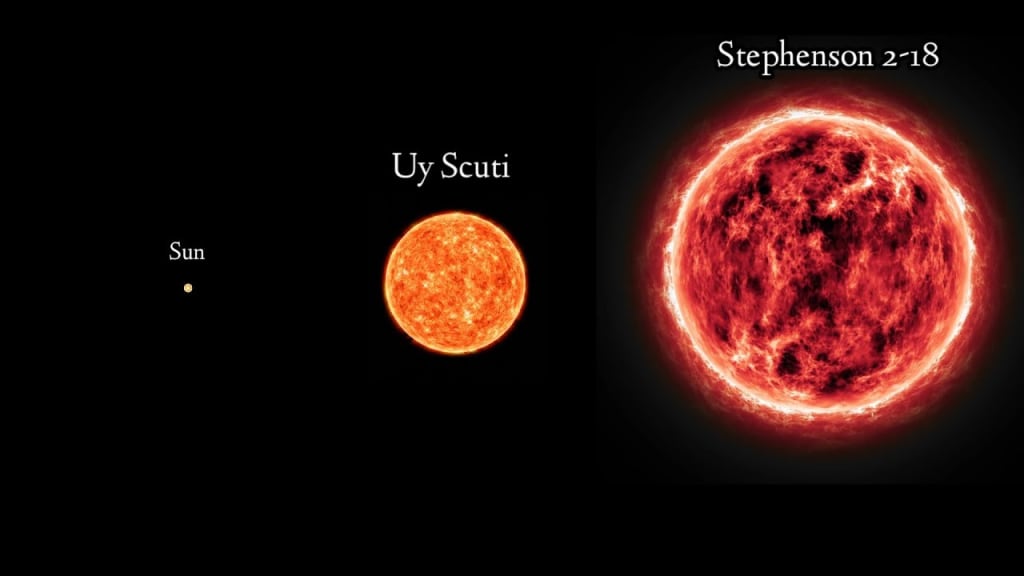
If you are interested in astronomy, you might have heard of the massive star known as Stephenson 2-18. This star is a true marvel of nature, with incredible size and luminosity that make it one of the most fascinating celestial objects in our galaxy. In this article, we will explore the story behind Stephenson 2-18, how it was discovered, and what makes it so unique.
Introduction to Stephenson 2-18
Stephenson 2-18 is a massive star located in the Milky Way galaxy. It was discovered in 1990 by American astronomer Bo Reipurth, who was studying a region of space known as the Cygnus OB2 association. This area is home to many massive stars, but none quite like Stephenson 2-18.
Characteristics of Stephenson 2-18
Stephenson 2-18 is an incredible star, with some of the most mind-boggling characteristics in the universe. Here are a few facts about this celestial giant:
Size and Mass
Stephenson 2-18 is estimated to have a mass of around 200 times that of our sun, which makes it one of the most massive stars known to exist. Its size is also staggering - it is thought to be over 2,000 times larger than the sun. To put that into perspective, if Stephenson 2-18 were placed at the center of our solar system, its surface would extend well beyond the orbit of Jupiter.
Luminosity
Stephenson 2-18 is incredibly bright, with a luminosity estimated to be over 10 million times that of the sun. This makes it one of the most luminous stars known to exist.
Age
Stephenson 2-18 is a relatively young star, estimated to be around 2-3 million years old. This might seem old, but in astronomical terms, it is still considered a baby.
How was Stephenson 2-18 Discovered?
As mentioned earlier, Stephenson 2-18 was discovered in 1990 by Bo Reipurth. Reipurth was using the UK Schmidt Telescope in Australia to study the Cygnus OB2 association, a region of space known for its high concentration of massive stars. He noticed a bright and unusual object in his observations, and after further analysis, he realized that it was a previously undiscovered star.
What Makes Stephenson 2-18 So Unique?
Stephenson 2-18 is a truly unique star, and there are several reasons why it stands out from the crowd.
Extreme Mass and Size
As we discussed earlier, Stephenson 2-18 is one of the most massive stars known to exist. Its size is also staggering - it is so large that it is almost difficult to comprehend. The sheer scale of this star is what makes it so fascinating to astronomers.
High Luminosity
Stephenson 2-18 is also incredibly bright, with a luminosity that is almost beyond comprehension. Its brightness makes it an important object for astronomers to study, as it can provide insights into the behavior of such massive stars.
Short Lifespan
Despite its massive size, Stephenson 2-18 is not expected to live for very long. Its extreme mass means that it will burn through its fuel relatively quickly, and it is expected to end its life in a dramatic supernova explosion.
Additional Facts About Stephenson 2-18
In addition to its incredible size, mass, and luminosity, there are a few other interesting things to note about Stephenson 2-18:
It's a Variable Star: Stephenson 2-18 is classified as a variable star, meaning that its brightness changes over time. In fact, its luminosity can vary by up to 10% over the course of just a few days. This variability is thought to be caused by changes in the star's outer layers, which can expand and contract over time.
It's Part of a Binary System: Stephenson 2-18 has a companion star, which is also massive and bright. The two stars orbit around a common center of mass, and are separated by a distance of about 1.2 astronomical units (AU). This means that they are relatively close to each other, at least compared to the vast distances between most stars.
It's One of Many Massive Stars in Cygnus OB2: Stephenson 2-18 is just one of many massive stars located in the Cygnus OB2 association. This region is home to some of the most massive stars known to exist, with many of them exceeding 50 times the mass of our sun. Studying these stars can provide valuable insights into the early stages of star formation and evolution.
Conclusion
Stephenson 2-18 is a truly remarkable star, with incredible size, mass, and luminosity that make it one of the most fascinating objects in the Milky Way. Its discovery has had a significant impact on the field of astrophysics, and scientists are continuing to study this celestial giant in the hopes of unlocking its secrets. While there is still much we don't know about Stephenson 2-18, its sheer magnitude and uniqueness make it a truly awe-inspiring object to behold.
About the Creator
Void
Hi there! I'm a writer who loves exploring the intersection of fact and fiction through storytelling. Join me on my literary journey as I delve into the depths of the human experience and bring new worlds to life.






Comments
There are no comments for this story
Be the first to respond and start the conversation.